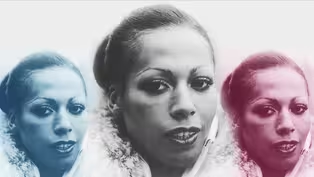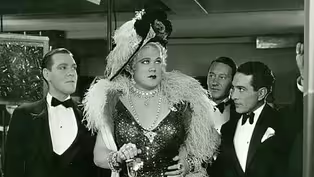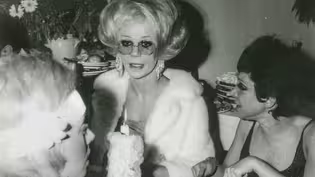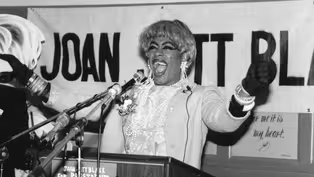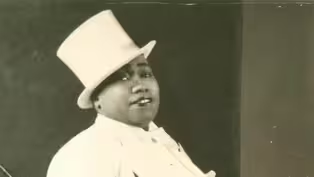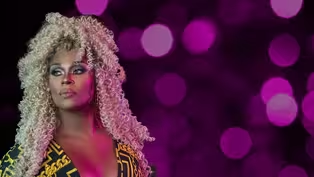
Jose Sarria: Legendary Drag Queen and Queer Activist
Special | 5m 52sVideo has Closed Captions
Sarria was a legend of the San Francisco drag scene.
A legend of the San Francisco drag scene. Out and Latino, Sarria dedicated his life to fight for queer rights and even ran as the country's first known openly gay candidate for public office. An international drag charity that he helped found continues his legacy with legendary drag galas to this day.
Problems playing video? | Closed Captioning Feedback
Problems playing video? | Closed Captioning Feedback
Support for American Masters is provided by the Corporation for Public Broadcasting, AARP, Rosalind P. Walter Foundation, Judith and Burton Resnick, Blanche and Hayward Cirker Charitable Lead Annuity Trust, Koo...

Jose Sarria: Legendary Drag Queen and Queer Activist
Special | 5m 52sVideo has Closed Captions
A legend of the San Francisco drag scene. Out and Latino, Sarria dedicated his life to fight for queer rights and even ran as the country's first known openly gay candidate for public office. An international drag charity that he helped found continues his legacy with legendary drag galas to this day.
Problems playing video? | Closed Captioning Feedback
How to Watch American Masters
American Masters is available to stream on pbs.org and the free PBS App, available on iPhone, Apple TV, Android TV, Android smartphones, Amazon Fire TV, Amazon Fire Tablet, Roku, Samsung Smart TV, and Vizio.
Buy Now
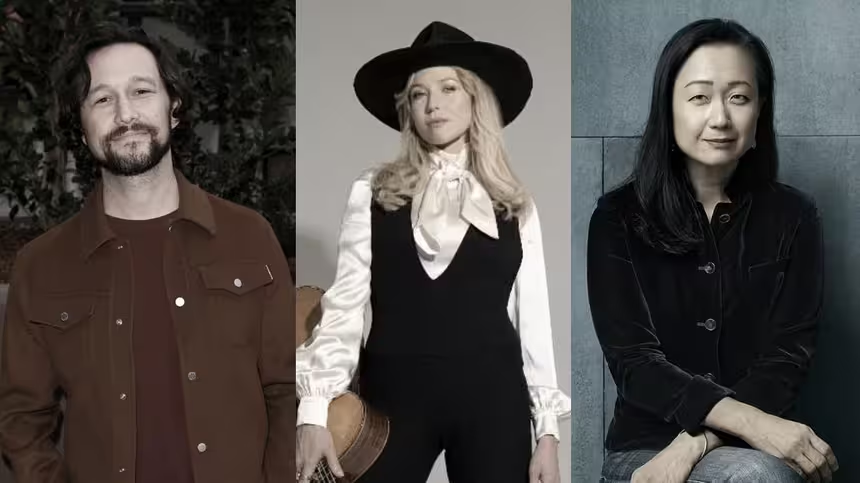
A front row seat to the creative process
How do today’s masters create their art? Each episode an artist reveals how they brought their creative work to life. Hear from artists across disciplines, like actor Joseph Gordon-Levitt, singer-songwriter Jewel, author Min Jin Lee, and more on our podcast "American Masters: Creative Spark."Providing Support for PBS.org
Learn Moreabout PBS online sponsorshipMore from This Collection
In this digital series, New York's sweetest drag diva Peppermint tells the story of pioneering American drag artists. In the process, she demonstrates how drag is a performance art form that has thrived in this country for generations, entertaining LGBTQ+ and general audiences alike, and providing the former with an important outlet of self-expression.
William Dorsey Swann: The first "Queen of Drag"
Video has Closed Captions
Born into slavery, Swann was the first known person to identify as a “Queen of Drag.” (4m 39s)
Crystal Labeija: The Queen Who Reinvented Ball Culture
Video has Closed Captions
Crystal was a proud Black trans woman, a drag mother and, a pageant girl. (5m 38s)
Jean Malin: Queen of the Pansies
Video has Closed Captions
Jean Malin was one of the first openly gay performers in the Prohibition era. (5m 57s)
Flawless Sabrina: Queer Icon and Star of 'The Queen'
Video has Closed Captions
She was an artist, activist, gay mother and mentor to hundreds of queer youth. (6m 30s)
Joan Jett Blakk: The drag queen who ran for president
Video has Closed Captions
She ran for president in lipstick, heels and eyeshadow. (6m 13s)
Gladys Bentley: Drag King of the Harlem Renaissance
Video has Closed Captions
Gladys Bentley was a musician and drag king who was a part of the Harlem Renaissance. (5m 57s)
Julian Eltinge: Female Impersonator of the Vaudeville Era
Video has Closed Captions
Julian Eltinge was a female impersonator who was once America's highest paid performer. (4m 45s)
Providing Support for PBS.org
Learn Moreabout PBS online sponsorship- José Julio Sarria was a legend of the San Francisco drag scene.
Out and Latino, Sarria dedicated his life to fight for queer rights and even ran as the country's first known openly gay candidate for public office.
But why did he take offense to being called a drag queen?
I'll explain.
- Oh my God, isn't that fantastic?
- [Peppermint] Hi, y'all I'm Peppermint, New York City's delightful diva and welcome to Masters of Drag where we're telling you stories of American drag pioneers.
Before he took to the stage delighting audiences and flabbergasting authorities with his edgy musical reviews.
Sarria first served as a staff Sergeant in World War II.
After the bombing of Pearl Harbor in 1941, Sarria dropped out of college and volunteered to enlist, but less than five feet tall and weighing just 90 pounds.
(Peppermint clears throat) I beg your pardon.
Sarria didn't actually meet the military's physical requirements.
Sarria claims he skirted the rules by taking his recruiter to lunch and inviting him up to his hotel room.
(Peppermint laughs) The next thing you know, Sarria was in.
Hey, if it works, it works.
Now, when Sarria returned to San Francisco after the war, he used the G.I.
Bill to go back to college.
He wanted to be a teacher.
Around this time, he also got a part-time job as a singing cocktail waiter at the legendary Black Cat Cafe to make ends meets.
And honey, he was known for wearing heels and belting out operatic songs all while serving you drinks.
He was an absolute smash hit.
Around the early 1950s, Sarria was arrested for solicitation at a local gay cruising spot that was very popular with all the boys, if you know what I mean, which instantly dashed his dreams of teaching.
Back then, being outed as gay could ruin a career.
So, he plunged himself deeper into the world of performance and drag.
Good choice, henny.
Every Sunday at the Black Cat, his show soon became known for modern day drag parodies of classic operas.
Now, take this footage of Sarria on stage in 1961.
♪ I have a nelly little hat to wear ♪ ♪ On top of my noggin ♪ ♪ My gay old boo, he bought a hat for me ♪ ♪ I got a lovely hat to use ♪ ♪ And now I'm happy, merry ♪ At the end of each performance he'd encourage the entire audience to link arms and sing along as he belted out the lyrics, "God save us, nelly Queens" to the tune of "God Save the Queen".
He did it even though he knew the cops were creeping around the bar that night ready to arrest him.
It was an act of defiance for the queer community.
In fact, his whole act with tinged with political activism.
This was at a time when it was still illegal to be gay and police frequently raided and fined queer establishment.
He even encourages his drag queen hennies to wear notes pinned to their dresses, saying "I'm a boy" in protest of the impersonation laws that the police were using as an excuse to target LGBTQ people.
His most famous slogan enshrined forever on his tombstone was "United we stand, divided they catch us one by one."
The worsening harassment of the queer community in the 1950s only strengthened Sarria's activism.
In 1961, he decided to run for the San Francisco Board of Supervisors, becoming the first known openly gay political candidate in American herstory.
And although he didn't win, the bigger victory was the message he and his voters sent to the political establishment, that there was a whole gay community out there who voted and politicians best pay attention.
By the end of that decade, San Francisco's liberal politicians were actively courting gay voters and starting to take the community's issues seriously.
15 years after he lost that election, Harvey Milk ran for a similar seat in San Francisco and won.
Remember how I told you that Sarria didn't want to be called a queen?
It's because when he was crowned at a public drag ball, he said he was an empress, not just a queen.
So, Absolute Empress I became his nom de plume, along with Widow Norton Empress José I and Nightingale of Montgomery Street.
Okay, girl.
It was around that same time that Sarria founded the Imperial Court System, a charitable organization that raises funds for the queer community, mostly by throwing extravagant drag galas.
Today, decades after its founding, the organization is known as The International Court System and it remains one of the oldest and largest LGBTQ+ charities in the world.
After his death at the age of 90, the city passed a resolution supporting his induction into the California Hall of Fame, saying, "Sarria paved the way for many lesbian, gay, bisexual, transgender, and queer candidates who followed to seek and win elected office across San Francisco, elsewhere in the United States and around the world."
As we're learning more and more about the drag performers that shaped the movement today, we're finding that these artists made contributions to all parts of society, to music, art, and theater, as well as politics and activism.
The herstory of drag is intertwined with civil and human rights.
And José Sarria was not only an early champion of those rights, but left a legacy that continues to ripple around the world today.
Drag herstory is longer than most of us think, and we are only just beginning.
(upbeat electronic music)
Support for PBS provided by:
Support for American Masters is provided by the Corporation for Public Broadcasting, AARP, Rosalind P. Walter Foundation, Judith and Burton Resnick, Blanche and Hayward Cirker Charitable Lead Annuity Trust, Koo...


